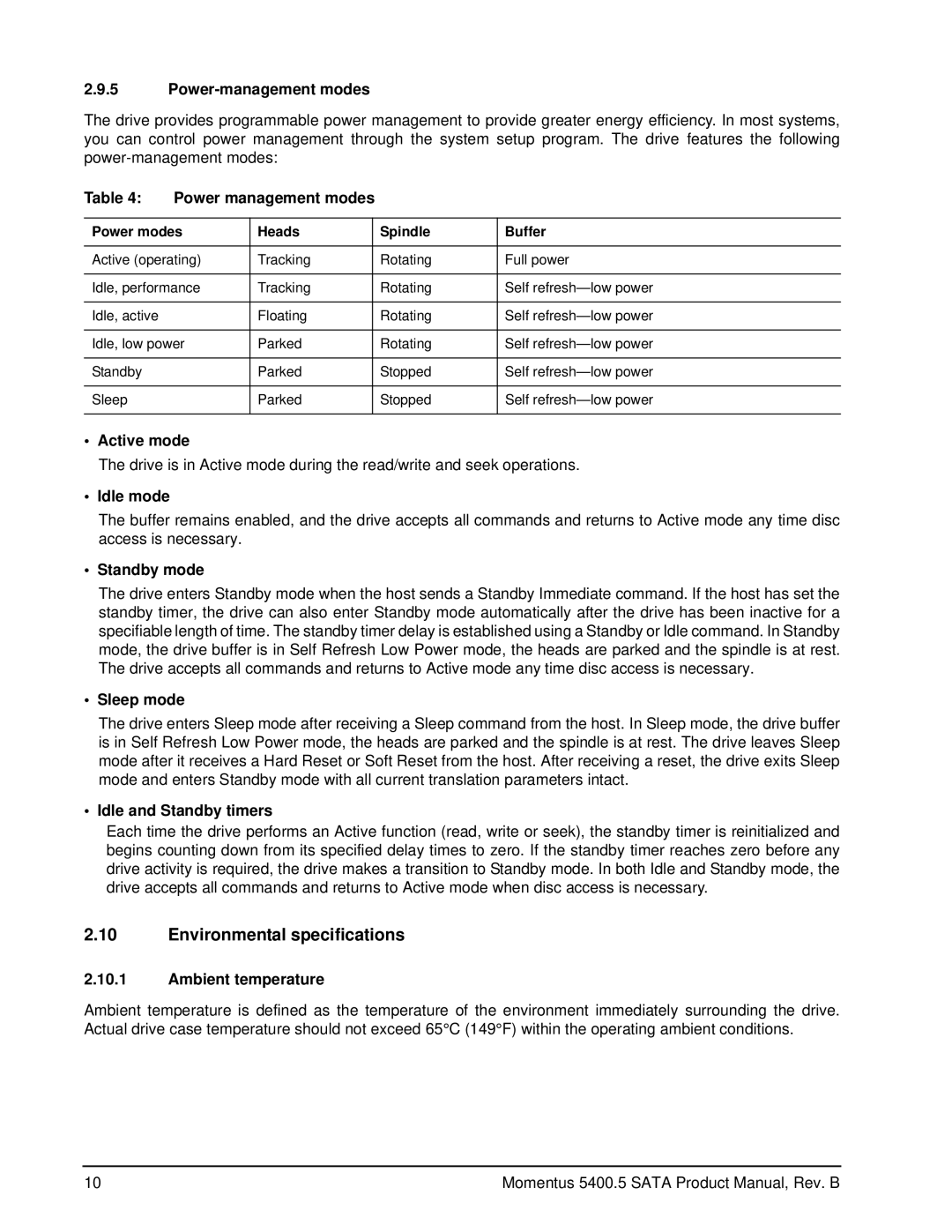ST9120310ASG, ST9250320AS, ST9120310AS, ST980310AS, ST9160310ASG specifications
The Seagate ST980310ASG, ST9320320AS, ST9200321AS, and ST9160310AS models are part of Seagate's well-regarded line of hard disk drives (HDDs), known for their reliable performance and technological advancements in data storage. These drives feature several key characteristics that make them suitable for various applications, ranging from personal computing to enterprise environments.The ST980310ASG is a 2.5-inch SATA hard drive with a storage capacity of 80GB. It operates at a speed of 5400 RPM, providing a balance between performance and power efficiency. The drive employs a 16MB cache, which helps enhance data access speeds, making it ideal for everyday computing tasks. Its low power consumption makes it a great choice for laptops or devices requiring energy efficiency.
The ST9320320AS, on the other hand, is a larger 320GB HDD that also benefits from a 2.5-inch form factor. This model runs at 7200 RPM, resulting in faster read and write speeds compared to its lower-RPM counterparts. With an 8MB cache, it is well-suited for applications demanding higher performance, such as gaming and multimedia storage. The ST9320320AS utilizes the SATA interface, providing wide compatibility and ease of integration into various systems.
Moving to the ST9200321AS, this 250GB drive is another 2.5-inch SATA option that emphasizes speed and efficiency. It operates at 5400 RPM and features an 8MB cache. This model is particularly appealing for users seeking an optimal mix of storage capacity and performance for standard computing tasks and moderate data access demands.
Lastly, the ST9160310AS and ST9160310ASG models offer storage capacities of 160GB. Both drives operate at 7200 RPM, ensuring quicker data access and transfer rates. The ST9160310ASG variant addresses specific needs for enhanced performance, often targeting gaming applications and high-performance computing systems. Superbly engineered, these drives include features like advanced error recovery controls, thermal monitoring, and data protection technologies that enhance reliability.
Collectively, these Seagate HDDs encompass diverse storage solutions characterized by their efficient performance, varying capacities, and advanced technologies tailored to meet the needs of different users. Whether for casual use, gaming, or enterprise applications, the ST980310ASG, ST9320320AS, ST9200321AS, and ST9160310AS models remain trusted choices in the realm of computer storage.
